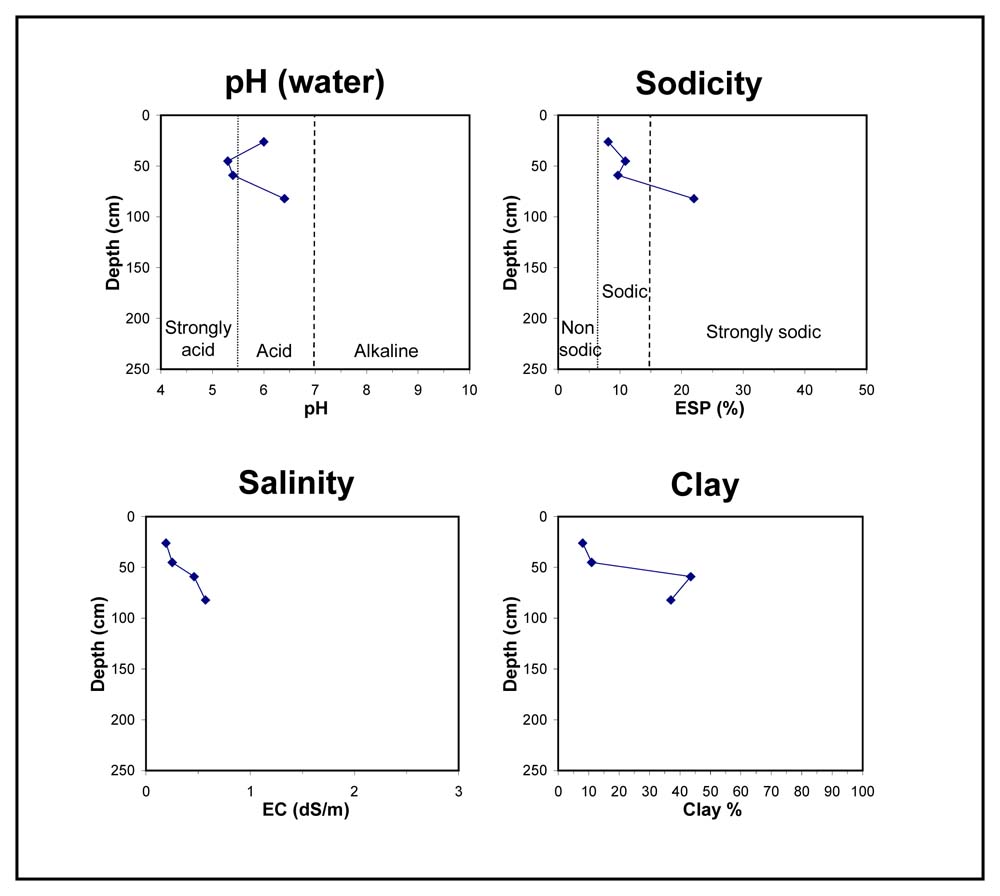GL17
| Site: GL17 | Land Unit: Dundas Redgum |
| Aust. Soil Class.: Mottled, Natric, Black KUROSOL (confidence level 1) |
 |
|
Site Description:
| Geology: Cainozoic duricrust | Landform pattern: Level to gently undulating plain |
| Position in landscape: Lower slope / drainage depression | Internal drainage: Imperfectly drained |
Soil Profile Morphology
| A11 | 0-5 cm | Very dark brown (10YR2/2) loamy sand, weak subangular blocky structure (2-10 mm), pH 6.0; transition to: |
| A12 | 5-25 cm | Very dark grey (10YR3/2) loamy sand, massive structure, pH 6.0; diffuse transition to: |
| A13 | 25-45 cm | Very dark greyish brown (10YR3/2) sand, bleached (10YR6/1) when dry, massive structure, pH 6.0; clear transition to: |
| Subsoil | ||
| B21 | 45-80 cm | Very dark greyish brown (10YR3/2) medium heavy clay, many faint orange and yellow mottles, weak subangular blocky structure (5-15 mm), pH 5.3; abrupt transition to: |
| B22 | 80-120 cm | Reddish brown (2.5YR4/3) medium clay, many distinct yellow and orange mottles, weak subangular blocky structure (5-20 cm), few coarse fragments, pH 5.4. |
| BC | 120-180+ cm | pH 6.4. |
Key profile features:
- Deep sandy topsoil
- Strongly acidic subsoil
- Strong texture contrast between topsoil and subsoil
- Strongly sodic subsoil at depth
- Bleached A2 horizon
- Mottled subsoil



